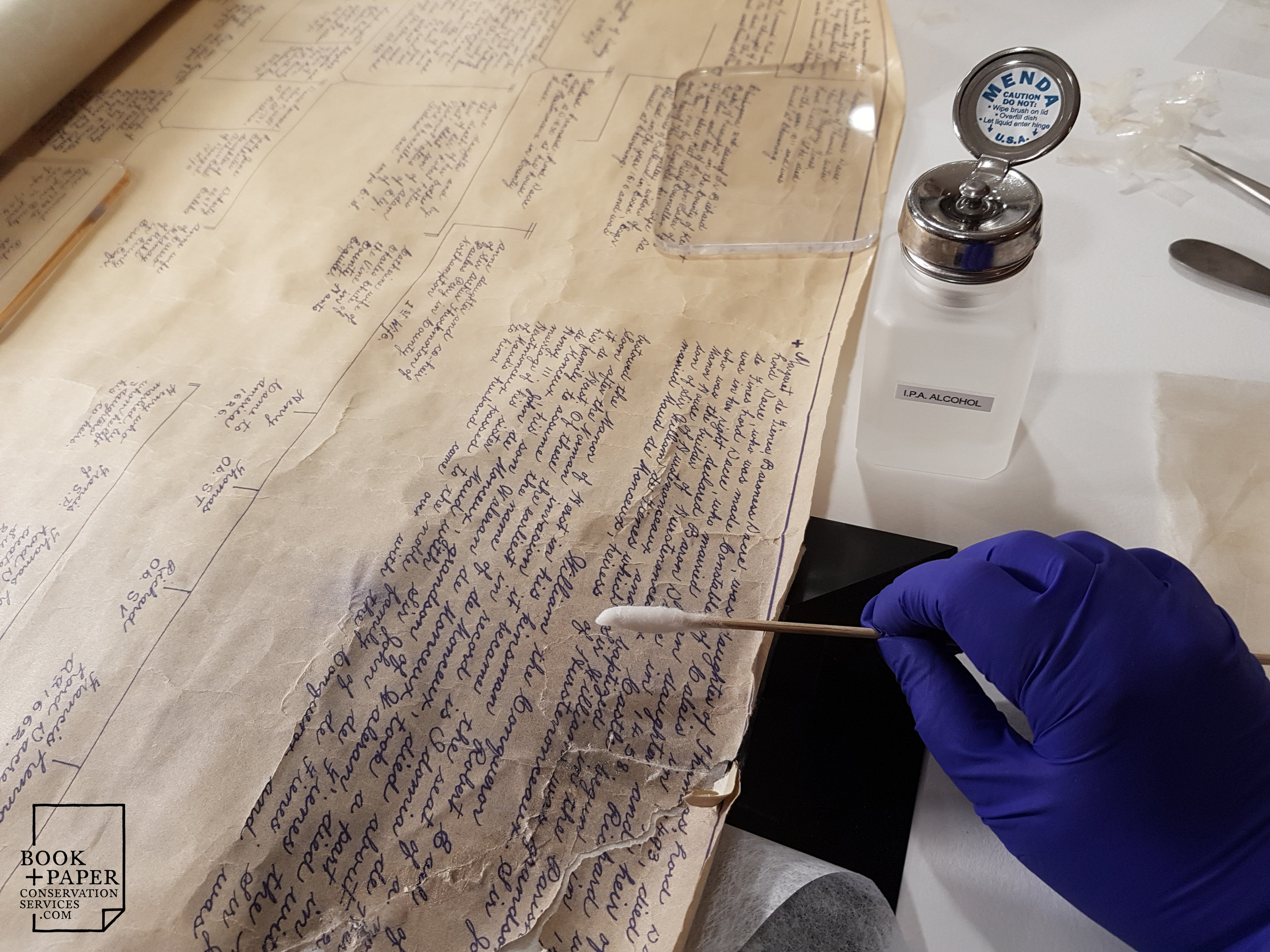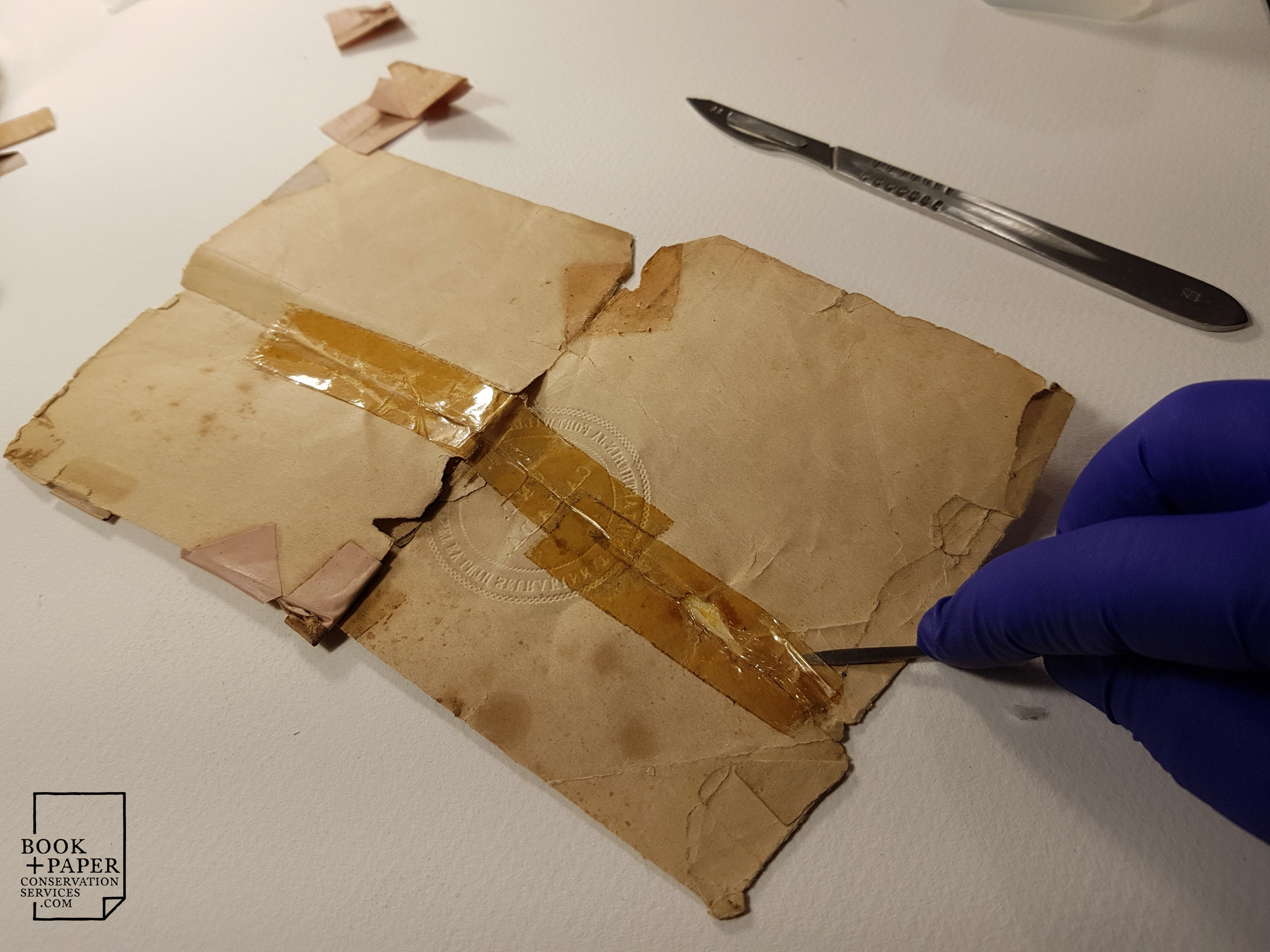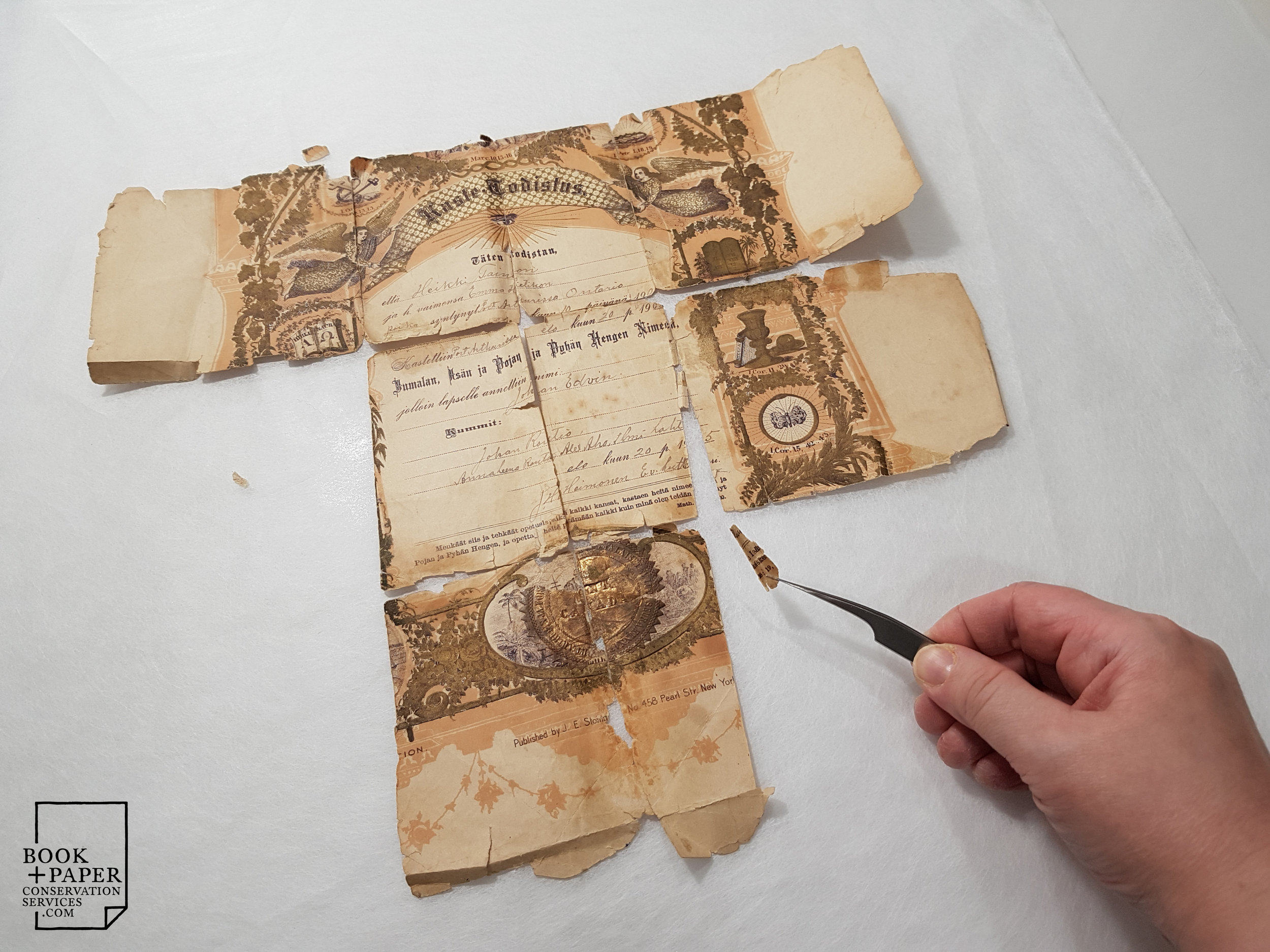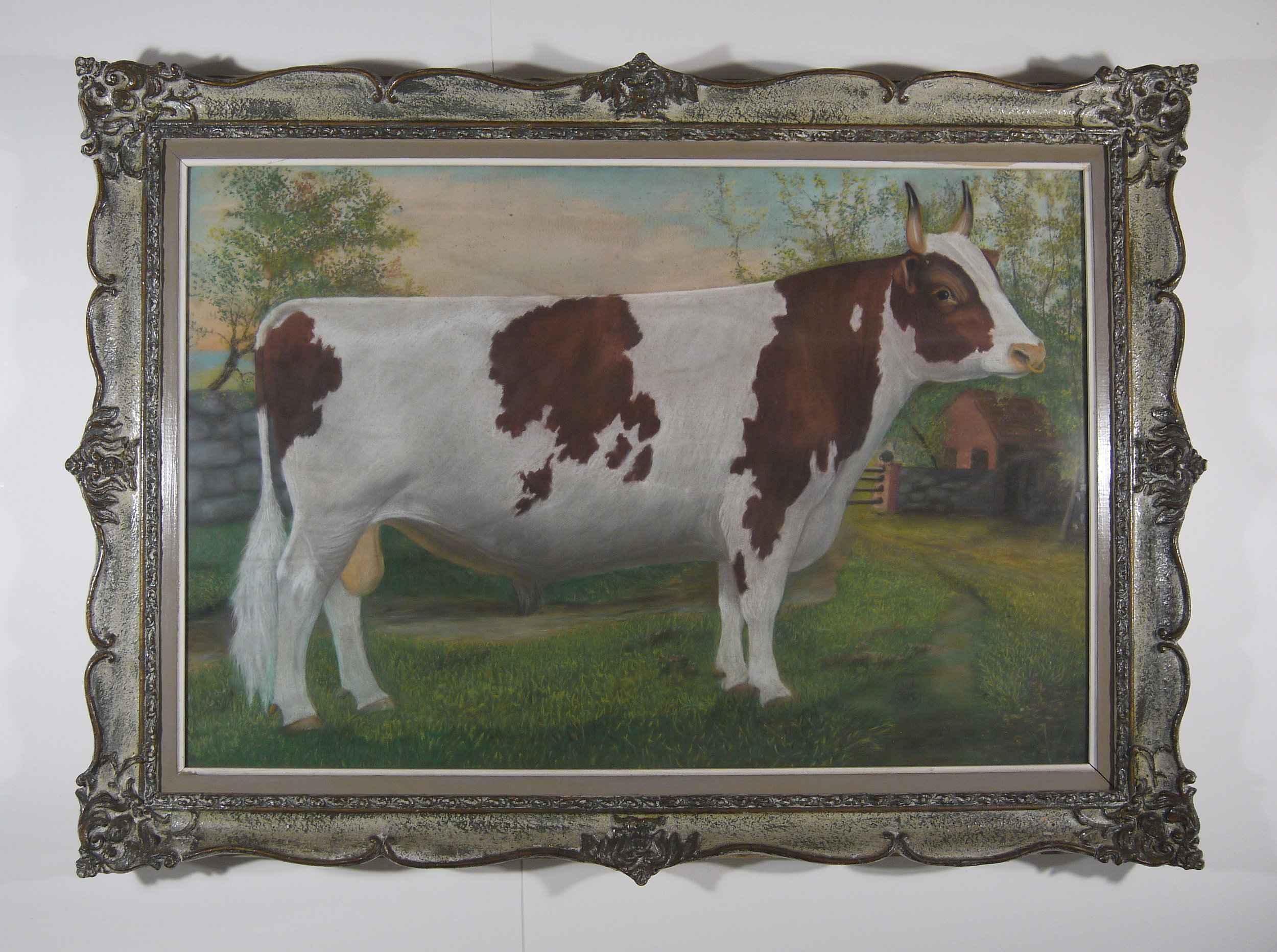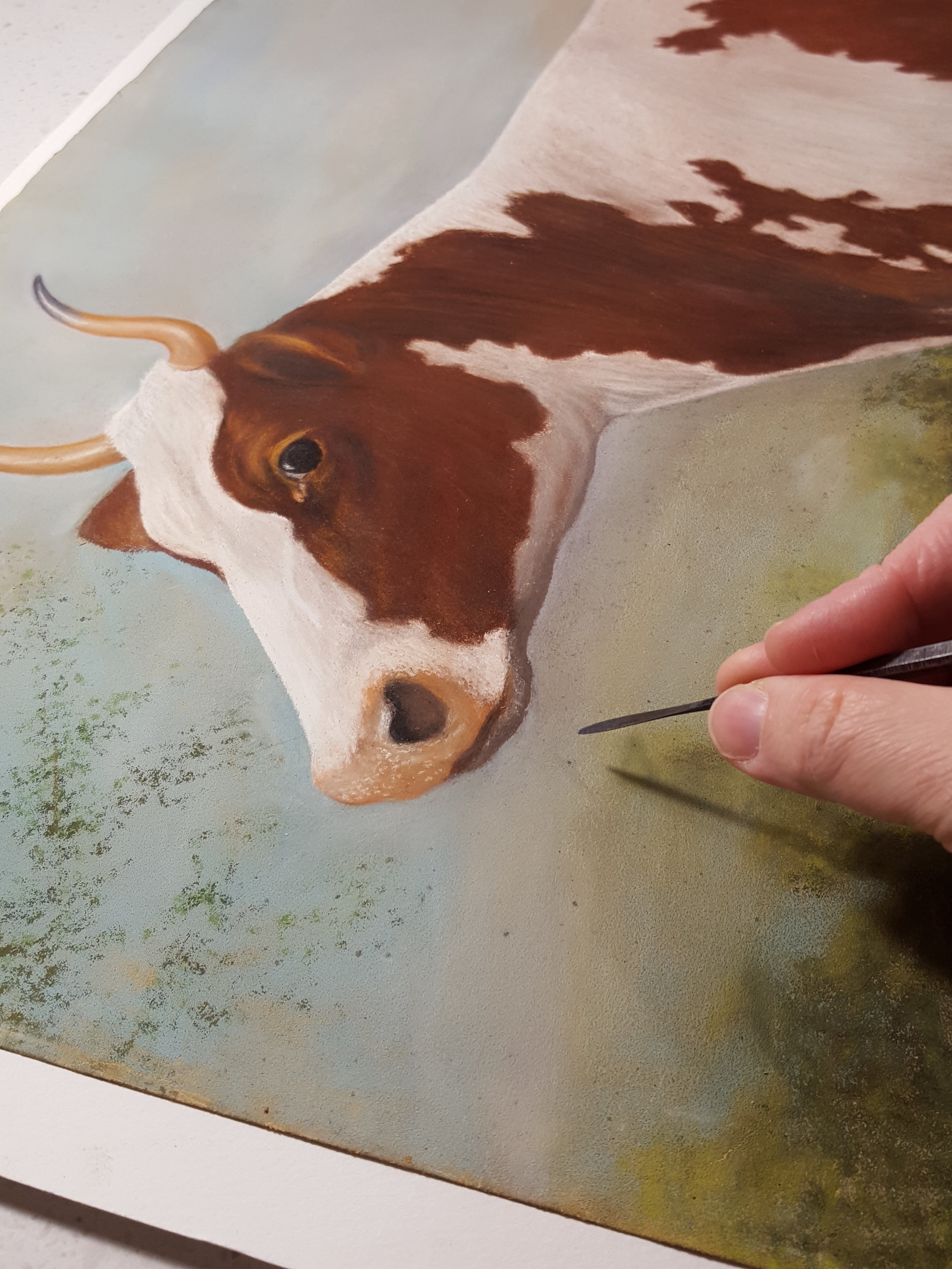Tape removal is executed using solvents during the conservation treatment of a client’s family tree.
The most common paper artifacts that ordinary people save and collect are documents related to their personal family history. Photographs, love letters, marriage and birth certificates that have been passed on from grandparents and great-grandparents are carefully - or not so carefully - saved in albums and drawers of personal mementos. Our ancestors may not have been able to protect them as well as we might wish, and whether through disaster, neglect or simply inherent vice, paper remnants of a family’s history often end up damaged and deteriorated.
Maybe you’re engaged in researching your family’s genealogy. Maybe you want to pass on some treasured items to your children or grandchildren. Maybe you’re simply curious or sentimental about an item that belonged to your great-grandparents. Either way, a conservator can help you restore and preserve these important personal items.
Our studio regularly treats family documents needing repair and restoration. We clean, flatten, repair tears, remove stains, deacidify, and fill and inpaint losses. We offer advice on proper storage conditions to preserve artifacts going forward, and can provide archival housings such as acid-free folders, mylar encapsulation and clamshell boxes for books and bibles.
A Polish birth certificate c.1905, folded, broken, and inaccessible.
Previous repairs with tape and bandaids have stained the paper fibres.
This birth certificate, from a family of Polish ancestry, was recently brought in for conservation treatment. The document, over 100 years old, had been stored folded and the brittle paper had broken along the fold lines. It had been repaired in the past with materials close to hand, specifically sellotape and the unusual solution of band-aids! The owner was hesitant even to open the folded document, and consequently couldn’t access the information written inside, the birth and christening dates of her grandmother.
Removing various tapes from the document with scalpel and solvent.
Treatment included humidifying and unfolding the tightly folded package, removing the pressure sensitive adhesive tape and the remaining adhesive residue, and lining the fragments onto a new backing paper in order to create a new full sheet to stabilize the document. Some panels of the document were missing, but luckily the areas with handwritten text were all intact and the client could finally read the information.
Reassembling fragments of the birth certificate before repair by lining.
The certificate is lined onto a new sheet, making it safely accessible.
Ancestor photographs often come in for conservation treatment as well. Restoring treasured heirlooms is one of the most satisfying tasks of our daily work, and the feeling of returning a revived photograph to the descendent of it’s owner is wonderful validation for our hard work. The photograph below was the only image one client had of her great-grandmother, but biological damage had affected the emulsion layer of the photograph. Careful stabilization and inpainting restored the image, and the client was pleased to frame it with museum quality materials for display in her home.
Inpainting losses to the emulsion layer of a 19th century photograph.
This small notebook belonged to another client’s Polish father, and was brought with him when he immigrated to Canada after serving in the second world war. Her family now happily considers themselves Canadian, but memories of their father’s war experiences are treasured and revered, and this diary serves as a powerful reminder of the struggles he went though to reach safety. Conservation treatment stabilized it and a collection of other documents related to her parent’s immigration, now preserved for the family’s future.
Repairs with Japanese tissue and wheat starch paste to a Polish immigrant’s notebook.
A charming item came into the studio just before Christmas this year - a client’s childhood letter to Santa. We’re guessing it was c.1970s, by the request for bellbottoms, and the thoughtful request for a mink coat for her mother is very heartwarming. The letter had great sentimental value for the client, and we were pleased to return it carefully restored as a “christmas miracle” in time for the holidays.
Letter to Santa, before conservation.
Letter to Santa, after conservation.
Family history documents are one of our specialities at Book and Paper Conservation Services, and we don’t consider any items too small to be deserving of careful conservation and restoration. The stories that come with these artifacts make the work worthwhile, and although the documents may not be of much monetary value, the sentimental worth is incalculable.
Custom archival storage folders made to house family history documents once they have been conserved at our studio.
Art Conservator and Book and Paper Conservation Services owner Jennifer Robertson recently spoke to the Ontario Genealogical Society about preservation and conservation of family history documents. The talk was recorded and is available for viewing here. If you are interested in learning more about genealogy and connecting with other passionate family researchers in the London area, the OGS’s Middlesex branch website provides information on their monthly meetings and talks.
This small bible (before conservation treatment), travelled with a client’s father while he was on active duty in WWI. The restoration filled losses and stabilized the book, which was then passed on to her son as a family heirloom.
If you are interested in having restoration work done on your family documents or simply have questions on repair or preservation options, don’t hesitate to get in touch. Or, view our portfolio of conservation treatments of Archival Materials for more examples of this type of work.
May your artifacts live safely for many years to come!


